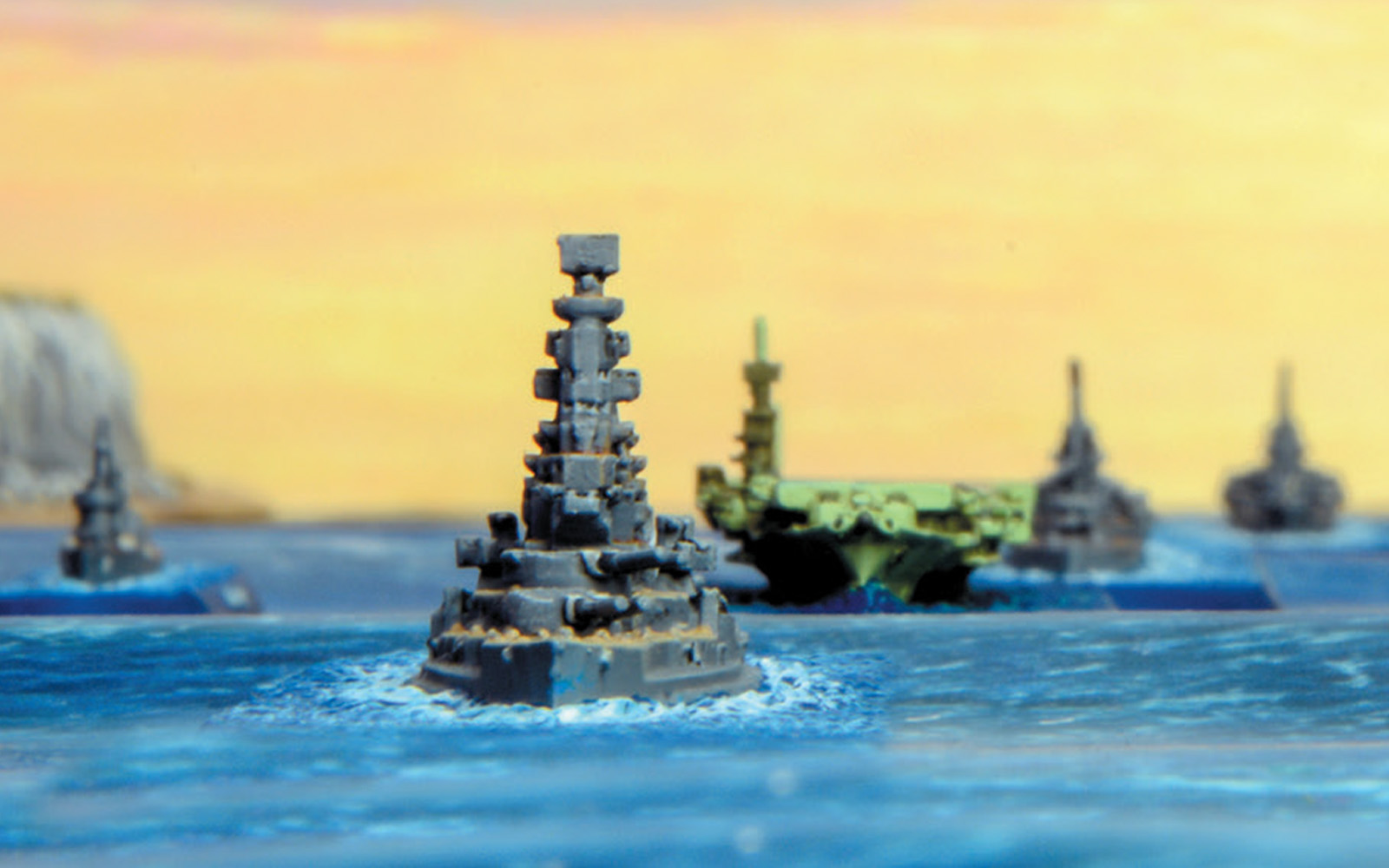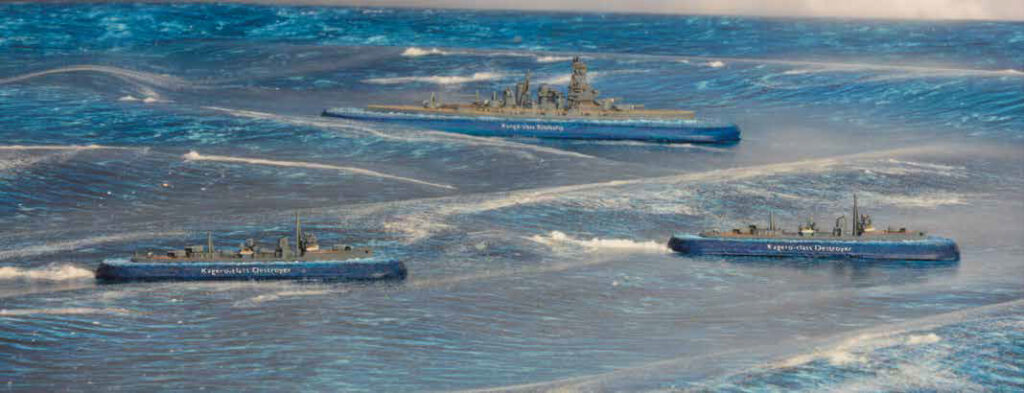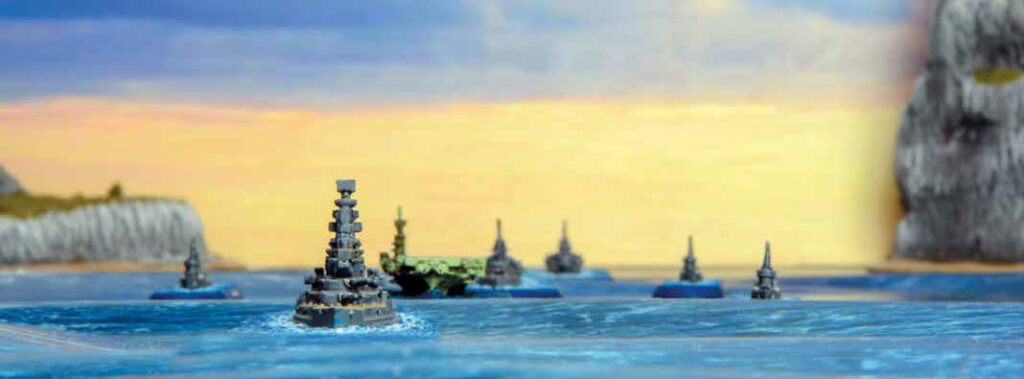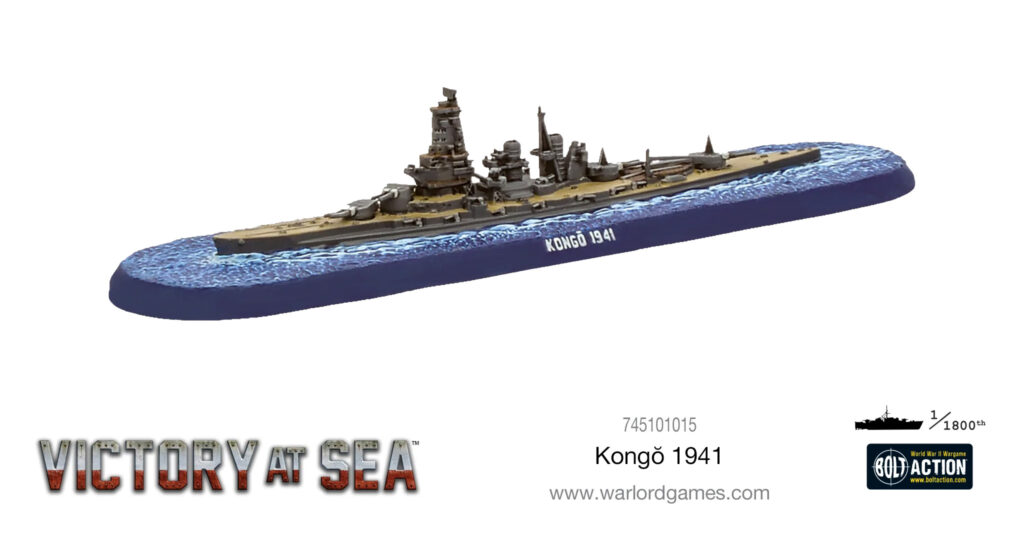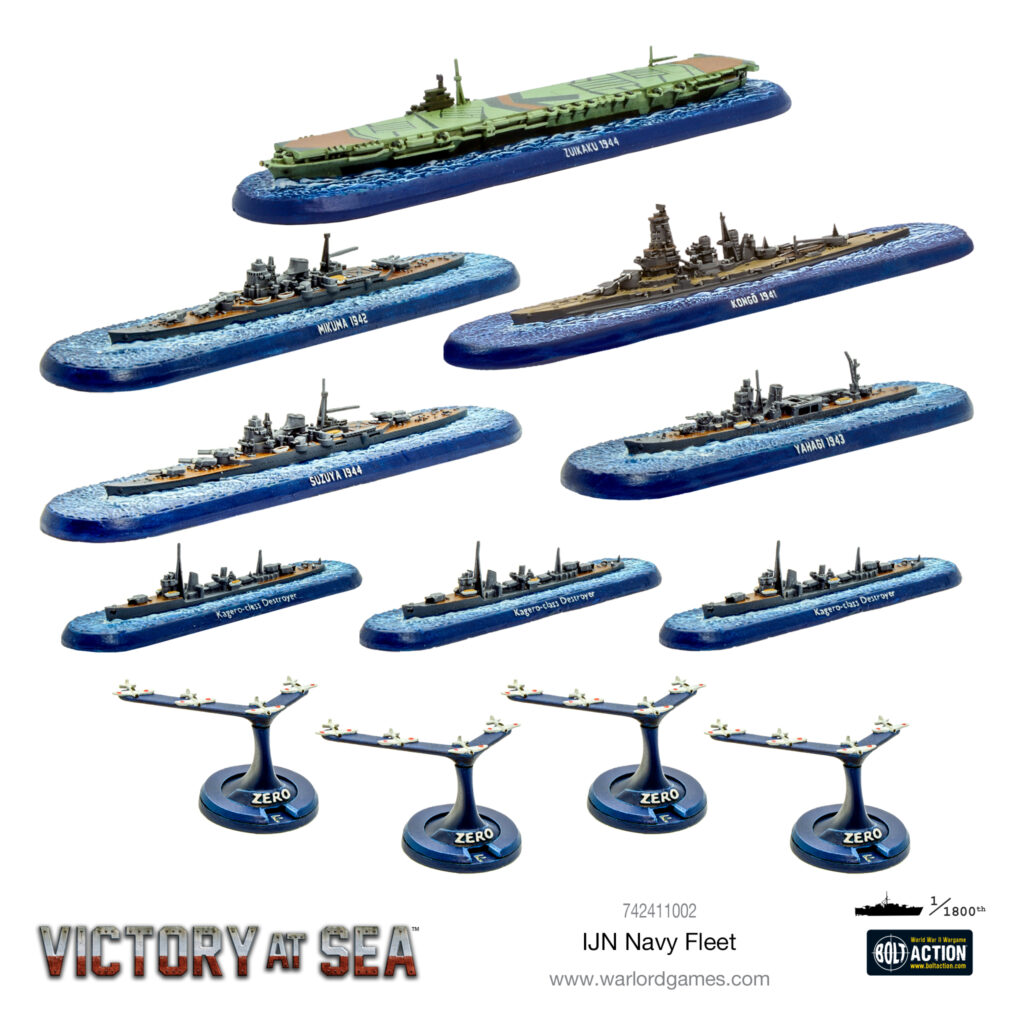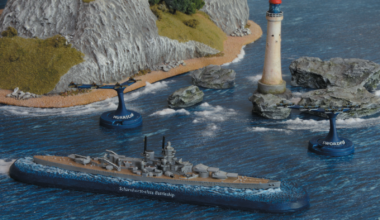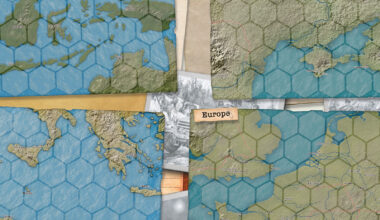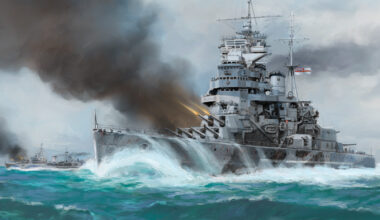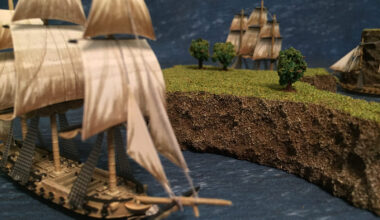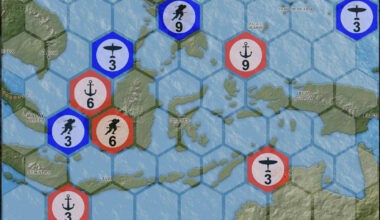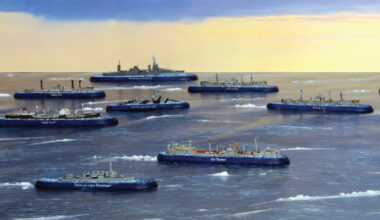In this edition of Forces of Fame, we’re heading back out to sea to look at the Imperial Japanese Navy (IJN) battlecruiser Kongō, arguably the most-discussed Japanese capital ship not named Yamato or Musashi! For my money, she’s also one of the best-looking ships of the war (Marcus’ opinions are strictly his own, and do not necessarily represent the rest of us at Warlord Games -ed.), and I’ll take absolutely any opportunity to talk about pagoda-style masts and extensive refits. It doesn’t hurt that she’s a bit of a beast on the Victory at Sea tabletop, either.
Laid down in 1911 by Vickers at Barrow-in-Furness, and commissioned in 1913, Kongō (named for the Japanese mountain) was the final Japanese capital ship to be constructed overseas, and served as the lead ship for a class of four. With a main battery of eight 14” guns in four twin turrets, she was the most powerful Japanese warship afloat at the time of her launch, and a significantly capable vessel for her era, being akin to the British ‘Splendid Cats’ (Lion-class battlecruisers built prior to WWI) in many respects. Kongō, along with her sisters, spent the majority of the First World War (in which, of course, Japan was an ally of Britain) patrolling the Chinese coast, seeing no action, and at the war’s end was placed in reserve (although she did continue to receive upgrades).
With the 1922 Washington Naval Treaty prohibiting Japan from constructing new battleships until 1931, Kongō underwent significant modernisation alongside a number of other older Japanese ships, receiving increased torpedo protection and a significantly more capable powerplant. At this time, she was reclassified as a battleship, although realistically her level of armour protection meant that she was still really a battlecruiser in all but name. With Japan’s 1933 withdrawal from the League of Nations and all naval treaties, there were no longer any restrictions on battleship construction or modification, and in 1935 Kongō was dry-docked for her most significant refit.
Intended to enable the ship to effectively escort the IJN’s new aircraft carrier fleet, Kongō’s boilers and machinery were once again upgraded. In addition, she was lengthened by 26 feet in order to optimise her length-to-beam ratio in favour of greater speed. Her armour was also significantly thickened and reinforced, giving her a uniform 8” belt thickness, with 10” on her turrets. When she emerged in 1937 she was capable of over 30kts, and was again reclassified as a fast battleship. Until the outbreak of war, she continued to receive small upgrades to her armour, as well as a continuous increase in anti-aircraft armament throughout the conflict, eventually totalling over 100 AAA (anti-aircraft artillery) barrels! At this time, she also received the distinctively Japanese ‘pagoda’ style of mast, allowing her to mount a significant number of rangefinders, searchlights, and AAA positions in a rather divisive-looking top-heavy setup, which I personally think looks absolutely stunning!
Throughout 1942 she provided escort for the rapid advance of Japanese troops throughout the Far East, a possible clash with the Royal Navy’s Force Z being averted only by the sinking of HMS Repulse and HMS Prince of Wales by IJN aircraft, before taking part in the devastating bombardment of Henderson Field on Guadalcanal on 13-14 October alongside her sister ship Haruna, which virtually annihilated the US Marine Corps’ aviation capability. 1943 saw several sorties, but no combat action, and she returned to Sasebo naval base for training and further upgrades to her anti-aircraft suite. Her most successful surface action came at the now-legendary Battle Off Samar on the 25th of October 1944 (find the scenario in the Victory at Sea rulebook – pgs 122-123), where she scored hits on the Taffy 3 taskforce escort carrier USS Gambier Bay, before sinking the destroyer escort USS Samuel B Roberts, before withdrawing with the remainder of the Japanese force. In November of that year, she sailed for the naval base at Kure with the rest of the First Fleet, but was hit on the 21st in the Formosa Strait by a pair of torpedoes from the submarine USS Sealion. Although an attempt was made to reach a nearer port, uncontrollable flooding caused the order to abandon ship to be issued a few hours later. Sadly, before the evacuation could get significantly underway, the forward 14” magazine detonated, sending Kongō to the seabed with over 1,200 of her crew still aboard, including her captain.
In games of Victory at Sea, the Kongō and her sisters give Japanese admirals an excellent high-speed vessel to compete with enemy battlecruisers and cruisers. That speed is essential to her survival, as her 4+ Armour value can leave her vulnerable to heavy enemy gunfire, but her own 14” guns give her more than enough punch to blast cruisers out of the water, and even engage enemy battleships with a reasonable expectation of doing serious damage. While not best-suited to drawn-out slugging matches, Kongō can do a great job of destroying numerous lighter vessels, while keeping enemy capital ships honest with the threat of her main battery. For 375 points, you can’t really go wrong!
Kongō is also available as part of the Imperial Japanese Navy Starter fleet, or explore the entire IJN range:
Other articles in the Forces of Fame Series:
Bolt Action – The Tiger I; Princess Elizabeth (Jubilee Special); Japanese Special Naval Landing Force; M18 Hellcat;
Blood Red Skies – Messerschmitt Bf 110; Ki-43 II ‘Oscar’; Grumman F9F Panther;
Victory at Sea – The Bismarck; Fletcher-Class Destroyers;
Pike & Shotte – Cuirassiers;
Black Powder (& Epic Battles) – The Iron Brigade; 95th Rifles;
Black Seas – HMS Victory;
Hail Caesar / SPQR – Dacian Falxmen; Hoplites;
